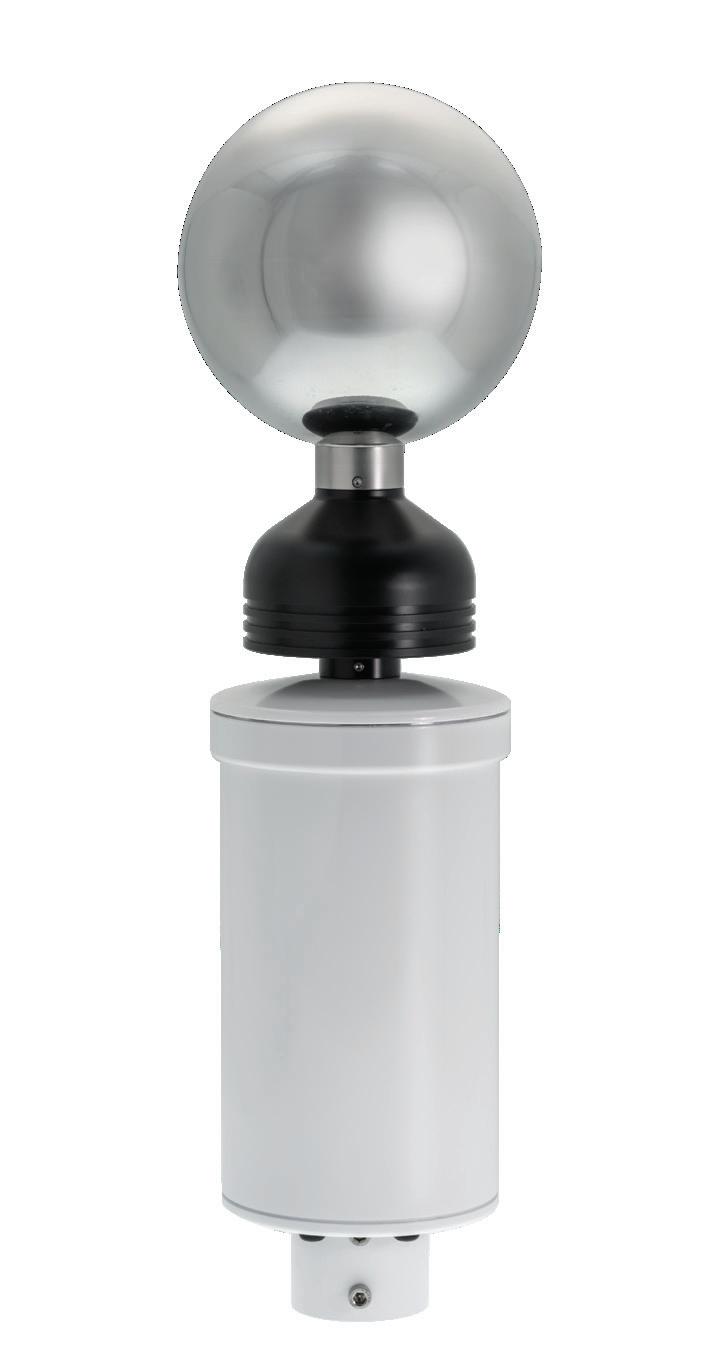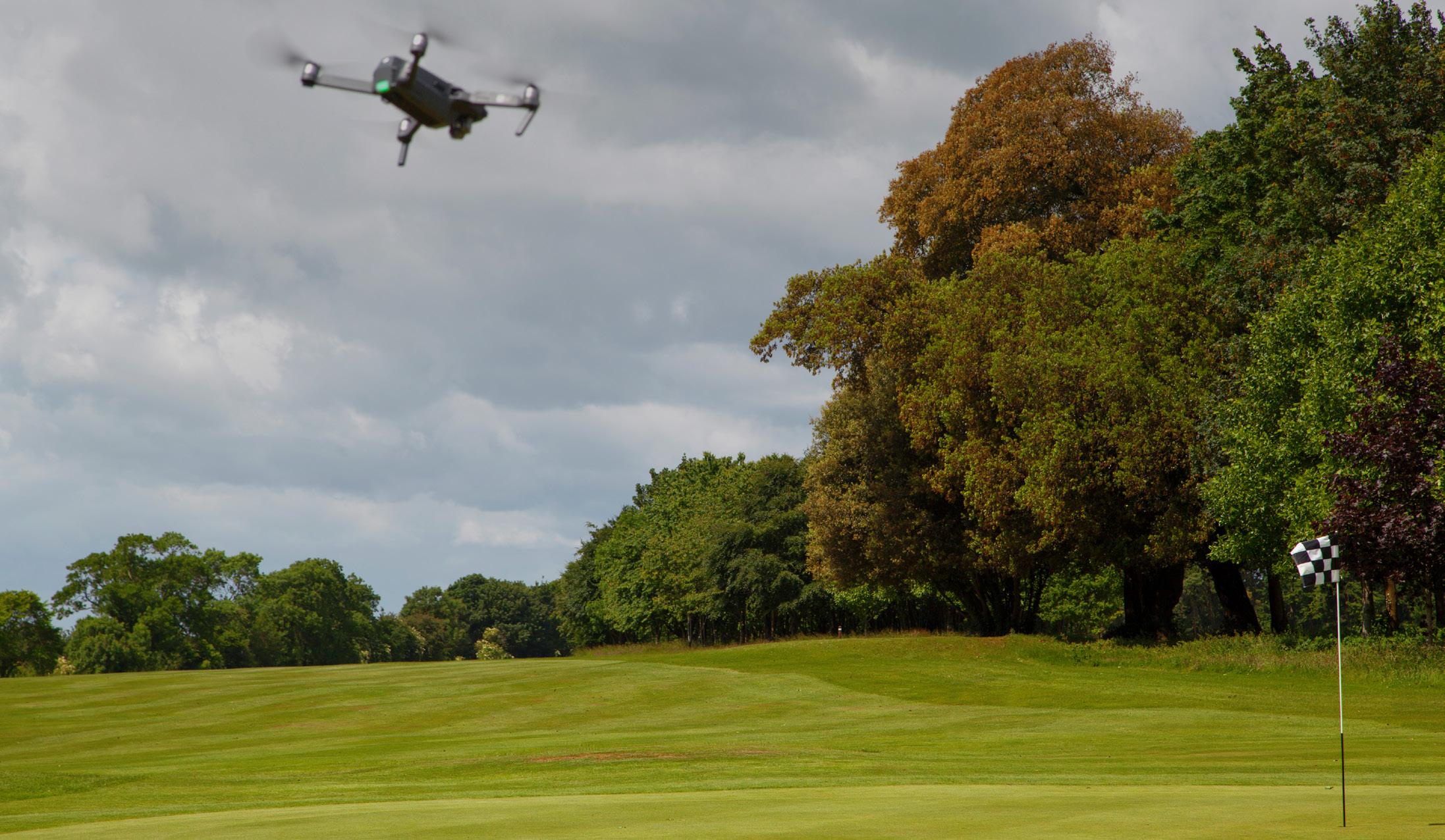
15 minute read
Prince’s general manager Rob McGuirk
The interview... ROB MCGUIRK

Advertisement
After three years of big investment, Prince’s general manager discusses the impact of coronavirus and his optimism for golf in an uncertain time…
We’re talking following the resumption of golf after a complete shutdown for nearly two months. How has coronavirus affected Prince’s? When it first started, before lockdown, we tried to keep everything open as far as was possible. We had a five-stage plan from going to single occupancy in the lodges through to moving F&B outlets from one point to another to give ourselves some room.
It eventually got to the stage where it was becoming very serious and the Government imposed the necessary measures.

The difficulty for us was that the end of March, and beginning of April, is basically the start of the golf season. We gave back over £100,000 of deposits and bookings to people.
We had to pay staff for six weeks before we got the furlough money and so it was almost a double whammy.
It was very difficult. We’ve managed to move some bookings to next year, but we were very fair with people. If they wanted their money back, we gave it to them. We didn’t hold on to it. We just said ‘we’d appreciate it if you could hold that for next year, we’ll keep the price for you’.
Half of them did that, and the rest wanted a refund, so it was quite a tough time from a cash flow point of view.
One thing we were quite fortunate with was that our membership renewals were on February 28. We had taken almost all of our subscription money before it happened and that gave us a little bit of leeway.
But coming off a tough winter, where we had a lot of rain, golf courses tend to make their money between the middle of March and the end of October. You lose money – and there is nothing you can do about that – between November and the end of February. The timing wasn’t great.
Of particular relevance this year
Rob McGuirk Rob McGuirk is a professional golfer and played full-time on the European Tour and Challenge Tour for eight years, after which he completed his PGA training. He became general manager at Prince’s in 2015.

was the arrival of The Open to Royal St George’s. I imagine you were planned to be very busy at that time with bookings and people wanting to play? We had a significant number of bookings in that week but most of those have moved to next year. I think we’ve moved over 100 bookings during Open week to next year in all. Nearly all of the corporate bookings are back in for next year already, which is great.
Keeping members informed and onside during all of this could have been a challenge. How did they react to the enforced layoff and your response to it?
They have been great. One thing they realise is that over the past three years we have invested significantly in the course and the facilities.
At a lot of other members’ clubs, such investments would have had to come from their pockets as well as the club, so I think they appreciate that all the money for the recent course improvements has come straight from our bottom line as a business.
They’ve seen the club grow, they’ve seen the investment, and we saw very little complaint over the seven to eight weeks.
Every week, or two weeks, we sent out emails and updated them on what’s happening on the course and a little bit of history. We also had some press attention in Top 100s lists to celebrate and share with the membership – which has been a welcome distraction. They’ve had communication throughout the whole pandemic and, as a group, they’ve been great.
How are you expecting the pandemic to affect what you can do at Prince’s over the next few months? My biggest concern is the hotel. Operating as a golf club, with the furlough scheme as it is, means we only need a certain number of green fees a week – plus members – to break even and cover costs. If the furlough scheme had dropped
off and we had to be liable for all the staffing costs as well then it would be very difficult and we would have to make some very tough decisions.
If it was golf only, and we could start including fourballs soon and some green fee play, we could pretty much get through a number of months.
As soon as you are liable for those staff costs, and with no hotel, it could be very difficult.
The other issue is the food and beverage side and social distancing. We are fortunate to have three outlets. We’ve got the upstairs clubhouse, a brasserie at The Lodge and a private room.
You will need more staff to patrol more areas and that’s not going to be overly efficient for the bottom line.
The irony, of course, is there’s probably never been a better time to visit Prince’s with all the work that has taken place. People who haven’t been a for a while perhaps wouldn’t recognise it for the changes that have been made… It is a shame but people will be back. We will be pretty patient with that. The investment has been significant in the last three years under the guidance of Martin Ebert, who has been brilliant to work with.
We’ve changed every single hole now, including putting two new ones in. We’ve listened to a number of journalists, top 100 raters and people in the industry, about how linear Prince’s was and how we can break up the angles.
We try to take all of those points on board to improve the facility and the course has really changed over the last three years.
We’ve put a lot of the original features back in, with the blowout sand areas from the 1920s, 30s and 40s. We’ve found pictures, which


show the huge sand dunes that had been blown through, and we’ve put a lot of those back into play.
It has been a great three years and it is frustrating that people won’t be able to see it, but it won’t be long before we’re back.
What was the process like with Martin and how did you work together? Going back to the first day, we spoke to Alistair Beggs, who at that time was an agronomist for STRI. We said ‘we’ve got to this stage and The Lodge is starting to work, the business is running well, but we need to move the golf courses to another level’.
We weren’t in any of the top 100s in Great Britain & Ireland and that was quite important for us and we just said ‘we want someone who is a links specialist’ and asked who he would recommend.
He put forward Martin Ebert and we knew he had done a great job at Turnberry and it was very well regarded.
We met with him and he went through a historic document, hole by hole on the Himalayas. He said what he wanted to do, presented it to my father, and that was it, really.
He is very easy to work with. He’s a really nice guy and he’ll take your ideas on board as well as his. But if he doesn’t think it’s right he will stand his ground and he has been great.
What has been the impact of the work he has done and the perception people have of Prince’s now? The Himalayas was almost like a blank canvas for Martin. He could do he wanted down there and we had to be slightly more careful on Shore/ Dunes.
The feedback from 99 per cent of people was that Himalayas blew them away. Shore/Dunes has also
improved significantly – and better than we would even have expected.
It’s the attention to detail with Martin. If you look at our green complexes – any one of them – and there are several things he has changed.
We’ve grown them out now so there are these huge run off areas. He has extended greens. It is difficult to put into words the changes across all 27 holes but if you had been here four years ago, and then came here now, you probably wouldn’t know where you were.
It is having the results you were looking for. You’re back in those Top 100 rankings… I went to the National Club Golfer Top 100 awards in November last

year and watched the presentations beforehand, talking about how many people look at rankings before they choose a course and that they are happier to spend a bit more money to play a top 100 course.
We’ve got two really strong courses next to us – Royal St George’s and Deal (Royal Cinque Ports) – and we had to elevate ourselves to become noticed.
We had to be different and that’s why we have the big sand areas and the big grass paths and the wetlands here and there. We had to be slightly different to those two courses to create the interest.
Certainly we’ve seen business pick up. We do about 30,000 rounds a year, which isn’t a great deal for a 27- hole course, but we are very strong on the rate.
We don’t do many discounts and, from that point of view, we can get the right amount of people playing, paying the right money, and it doesn’t feel like they are crammed in.
Prince’s is a family-run concern but members seem to feel like an important part of the operation. How does that relationship work and how do you run your club? We try and make sure members can always play. We listen to what they would like and we try and accommodate them. Whether it’s ladies, men or juniors – there are no restrictions and they can play whenever they like.
We have ladies’ competitions on

Get MORE advanced lightning detection
with the BTD-200 Lightning Warning System
The Biral BTD-200 Lightning Warning System is a complete, quick readyto-run design, self-contained sensor that reliably detects the presence of all forms of lightning to a range of 35km.
reesinkturfcare.co.uk
Get MORE from your turfcare partner this year:
More products . More advice . More training . More finance

MOST ADVANCED SYSTEM EVER
a Saturday morning and men’s on a Sunday. We run competitions throughout the week and there’s the flexibility that they can always get out and play.
We don’t try and pack the course and that makes them feel like they are getting value for their membership. Having 27-holes means it is rare they can’t get out.
We do look after them and we have got a very good membership and we’ve known a number of them for a long, long, time. They have grown through this improvement, from building The Lodge to the course, with us and they just love the place.

And they feel their opinions and views are considered? That’s always one of the differences between proprietary and private members’ clubs. In the latter the members effectively own the club… Here, if they have an idea or something they are not sure about they can always come and see us. Ultimately, people are here on their leisure time and they want to enjoy themselves. We do have a members’ committee and they discuss competitions. We run the golf and they can come down and relax.
It is unfair to say that members’ club committees can be difficult but when you have one or two people making all the decisions, as is the case here, members can
just come down, enjoy it and go home again, rather than getting caught up in all the politics. I think that’s one of the benefits of a proprietary club – you can get on with things.
We’ve just completed the changing rooms, shortly before the lockdown. The members weren’t that worried about the changing rooms but we felt we needed to upgrade them. If that went through a members’ club, it could take six, 12, 18 months to go through. Here, we make the decision and we get on with it. I think they appreciate that.
We don’t scrimp on anything. Everything we do, we do it properly.
It’s difficult to talk about the future during this pandemic, but this has been a period of significant development at Prince’s. How do you see the future of the business? We bought Chart Hills just before Christmas and it’s quite important for both us and them that, at some point, we will be joined up. At the moment they are two separate businesses but the plan was to have another course in Kent that we could use that had similar quality – although it may have fallen on hard times.
We wanted to offer a really good links experience but also a really good inland experience and to give the best of both worlds.
That’s probably the most important thing for our future – getting Chart Hills back to where it

Prince’s Steeped in history, Prince’s is a jewel on the Kent coast and part of an incredible triangle of links courses that also includes Royal St George’s and Royal Cinque Ports. The club hosted the Open in 1932, when Gene Sarazen lifted the Claret Jug, and continue to have close links to the championship as a host of local final qualifying. The 27-hole complex, made up of the Shore, Dunes and Himalayas loops, has been the subject of considerable investment over the last few years – with esteemed architect Martin Ebert undertaking a renovation of every hole. A family owned business, the McGuirks added Chart Hills to their portfolio at the back end of last year.
should be. It’s probably where we were five or six years ago and we need to bring them up to the same level that we are right now.
It was quite a bold move to take on a second club, particularly with all the investment you had put in at Prince’s… I was a founder member there and the family has always had a soft spot for Chart Hills. We’ve had three attempts at buying it. It’s not too far away and there’s not many courses that would come up and we’d actually look at and would complement Prince’s.
It is a bold move and it does need a lot of investment but we are not afraid of that. We just thought that Prince’s has turned the corner, can we do it somewhere else? It’s another challenge.
The clubhouse is finished at Chart Hills and they have finished all the bunkers. It is a risk but we feel like we can turn it round.
It is a course with a unique selling point and that is all of those bunkers. There is a point of difference there, compared with if you had taken on another facility… It has got a certain kudos to it, and its bunkers, but it is a great piece of land and we feel that it could be really special. Most of the really good clubs are member owned and you would do well to ever have a chance of purchasing those and then there’s nothing really else out there.
It’s a good layout. We can make it work with the Lodge and our packages and we would look to bolt it onto our three Open venue package with Royal St George’s

and Deal. It makes sense to go for it. Obviously, the timing has not turned out to be great but we have started the renovations there and it will be great by the time we have finished.
Do you feel optimistic? There’s a lot of uncertainty about but do you feel that golf has got a decent future ahead? I feel this is a good opportunity for golf, especially in this country. People won’t be travelling as much over the next two years and they will want to be outside.
If you are going to be playing golf with a household it’s a great way of introducing your partner and children to the sport.
I think there will be clubs that will struggle but those who are forward thinking and have a relaxed atmosphere, and are family based, will do pretty well.
Your content partner
Sports Publications are specialists in digital and print content creation. With a portfolio of in-house titles and websites, including the industry-leading National Club Golfer, we have a growing roster of contract clients including GolfBreaks.com, BIGGA, Golf Genius – and your very own GCMA.

• VIDEO PRODUCTION • FLYOVERS • CORPORATE VIDEOS • COURSE PHOTOGRAPHY • MEMBER MAGAZINES • CONTENT WRITING
YOU CAN EXPECT TO DOUBLE YOUR CLICKTHROUGH RATES ON NEWSLETTERS BY OFFERING VIDEO CONTENT 57% OF CONSUMERS SAY THAT VIDEO BUILDS CONFIDENCE IN A PRODUCT WEBSITES WITH VIDEO ARE 53 TIMES MORE LIKELY TO RANK NO 1 ON A GOOGLE SEARCH 76% OF CONSUMERS ARE MORE LIKELY TO SHARE A SOCIAL POST THAT CONTAINS VIDEO
Learn more at sports-publications.com or contact Tom Irwin on 07973 628 781 or t.irwin@sportspub.co.uk
Good PRACTICE
Advice on golf club management issues – from finance to clubhouse rules and employment law







